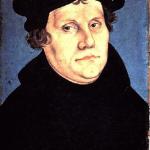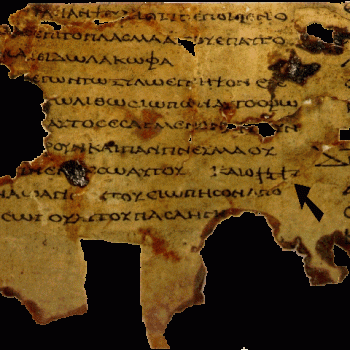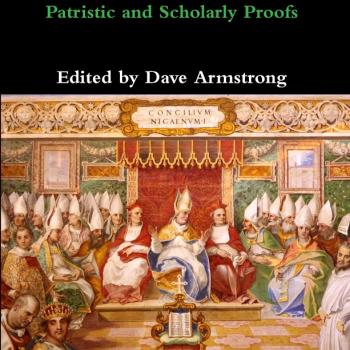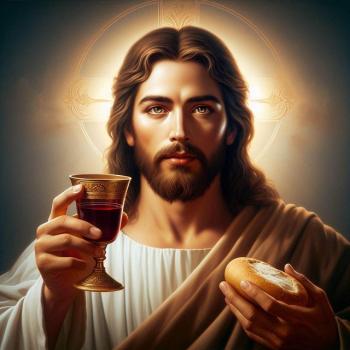Including a Turn the Tables Argument Regarding Protestant Doctrines Virtually Nonexistent in the Fathers (Sola Scriptura, Sola Fide)
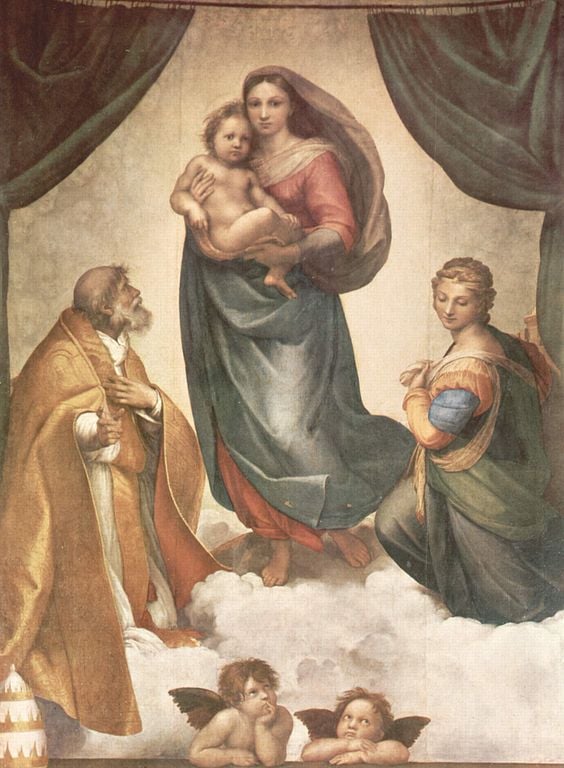
1) virtually no one, Protestant or Catholic, cares about such an exhaustive treatment of the Fathers;
*
2) very few in either group care about, or even understand in the most rudimentary way, development of doctrine (my favorite topic in theology, by the way, and the biggest factor in my becoming Catholic), that this subject necessarily involves;
*
3) I know that it’s exceedingly unlikely, based on almost universal past experience of thirty years, that you or any other Protestant apologist, would reply and interact with anything I might produce by way of counter-reply. So, e.g., Jordan Cooper tells me he has no time to counter-reply to my 18 or so critiques of his videos. Gavin Ortlund has only replied once to over 30 critiques. He, too, says he has no time for it and cites priorities, etc.
*
“Our Protestant friends are as fond as we are of making grand appeals to history and the consensus of the Church’s theologians down through the ages. But could they truly argue that the consensus of the theologians is on their side when it comes to their two “pillars”: sola Scriptura and sola fide?”
Whereas Augustine taught that the sinner is made righteous in justification, Melanchthon taught that he is counted as righteous or pronounced to be righteous. For Augustine, ‘justifying righteousness’ is imparted; for Melanchthon, it is imputed in the sense of being declared or pronounced to be righteous. Melanchthon drew a sharp distinction between the event of being declared righteous and the process of being made righteous, designating the former ‘justification’ and the latter ‘sanctification’ or ‘regeneration.’ For Augustine, these were simply different aspects of the same thing . . .
The importance of this development lies in the fact that it marks a complete break with the teaching of the church up to that point. From the time of Augustine onwards, justification had always been understood to refer to both the event of being declared righteous and the process of being made righteous. . . .
The Council of Trent . . . reaffirmed the views of Augustine on the nature of justification . . . the concept of forensic justification actually represents a development in Luther’s thought . . . . Trent maintained the medieval tradition, stretching back to Augustine, which saw justification as comprising both an event and a process . . .” (Alister McGrath, Reformation Thought: An Introduction, 2nd edition, Grand Rapids, Michigan: Baker Book House, 1993, 108-109, 115)
One can be saved without believing that imputed righteousness (or forensic justification) is an essential part of the true gospel. Otherwise, few people were saved between the time of the apostle Paul and the Reformation, since scarcely anyone taught imputed righteousness (or forensic justification) during that period! . . . . . (Roman Catholics and Evangelicals: Agreements and Differences, with Ralph E. MacKenzie, Grand Rapids, Michigan: Baker Book House, 1995, 222)
*
*
Delighted to see your reply!
There are always, of course, other scholars who disagree with any given scholar. That’s where it gets fun! I think it’s striking that statements such as the ones I cited from McGrath and Geisler exist at all. I believe that Jordan Cooper said in one of his videos that I’ve critiqued, if I recall correctly (and I think I do), that the Lutheran conception of justification was only fully developed in the 16th century (and that this was okay). I’m sure you could find bits and pieces of imputed justification here and there in the fathers and medieval theologians, but nowhere within a million miles of a consensus, even if McGrath’s views aren’t entirely accurate.
Also, our view of what we call initial justification is essentially the same. In this respect, even Trent allows some degree of imputation. Initial justification is entirely monergistic. Trent is very explicit and clear about that. Our concern is with the post-regenerate person’s life, and what he or she is responsible for then (and good works are a necessary part of that).
And so, if I’m correct about that, you’re basically in the same boat that you claim we’re in: you firmly believe a doctrine that is hard to find before Melanchthon (not even fully in Luther, who talked about theosis), just as you would say our Marian doctrines are late-arriving, and corruptions rather than developments. And the same goes for sola Scriptura. So that is one turn-the-tables reply. I’m not saying it nullifies your argument against us; just that Protestants also have similar “problems” in locating their distinctive views in historical theology.
As for resources on development, I have a web page devoted to it, including several introductory treatments and more in-depth stuff. I also wrote a book on the topic, way back in 2002. I’ll send you a free e-book version of that if you like (pdf, mobi, or ePub). Cardinal Newman’s essay on development is the classic treatment, and it’s free online. Nothing else comes to mind, but on Amazon, these three looked interesting:
A Brief Introduction to the Development of Doctrine: According to the Mind of St. Thomas Aquinas (Fr. Thomas Gilby, March 2023)
Vincent of Lérins and the Development of Christian Doctrine (Thomas G. Guarino, May 2013)
St. Vincent was basically Newman’s jumping-off point, as he developed his theory.
The Development of Dogma: A Systematic Account (Guy Mansini, Jan. 2024)
Here are five meaty and good Catholic articles:
What Does it Mean for Doctrine to Develop? (Fr. Thomas Weinandy, Catholic Answers, 5-2-20)
The Difference Between Development and Change (Eduardo, Echeverria, Catholic Answers, 6-15-20)
Newman, Aquinas, and the Development of Doctrine (Joshua Madden, Homiletic & Pastoral Review, 6-30-21)
Development of Doctrine and St. Vincent of Lerins (Joe Heschmeyer, Catholic Answers, 12-29-22)
On the relevance and reality of the development of doctrine today (Fr. Thomas Weinandy, The Catholic World Report, 1-18-24)
I will at least do a partial reply-article consisting of Newman’s thoughts on the patristic and later development of the belief in Mary’s sinlessness and Immaculate Conception, drawn from one or more of my three quotations books devoted to St. Cardinal Newman.
God bless!
Thank you for the lengthy reply!
Part of my interest in this article was in asking the question: Does every Roman Catholic dogma pass the “consensus of the fathers” check? (With the Immaculate Conception as a case study); especially since that check is very often levied by RC laymen against all sorts of Protestants on all sorts of issues (whether accurate or not). As such, it was intended to be a bit of an internal critique of sorts. I need to do a lot more reading before I make up my own mind on the subject of doctrinal development and put forth my own positive construction on the issue (and the ways it may relate to doctrines such as Sola Fide).
In line with that, I will certainly check out the resources you’ve linked (probably a little later once I’m done working on a few projects I have going at the moment). If you do write an article on this, I’ll also try to make time to read it as promptly as my schedule allows.
Thanks again for the charitable interaction.
Well, the short answer to your question is that we think doctrines develop at different rates. The Immaculate Conception obviously developed very slowly. The first motif was “New Eve” or “Second Eve”. Newman notes that pre-fallen Eve — like Adam — was a sinless person; therefore the patristic analogy, which he describes as “explicit” presupposes a sinless Mary. If that’s true, then it’s present in that sense every time we see this common theme in the fathers.
On a broad scale, Catholics agree that Jesus was front and center, both in the NT and in the fathers. That’s our answer if asked why there is so little about Mary in the NT. Trinitarianism was still being importantly developed in the 6th and even 7th centuries. The Christological heresy of Monophysitism was still present in the 6th century, and Monothelitism extended all the way to the Third Council of Constantinople in 681, where it was condemned. So we’re talking about some 650 years after Christ just to get trinitarianism and the deity of Christ right once and for all. A lot of folks (including in vast areas in the East, still didn’t fully get it) Once that was established, folks thought relatively more about Mary and many other topics of theology, and development quickened as a result. First things first, in other words.
By the time of III Constantinople, Germanus, from the same city was alive (c. 634-c. 733), and he even taught the doctrine of Mary Mediatrix. The Oxford Dictionary of the Christian Church (1983, ed. Cross), stated that “Mary’s incomparable purity, foreshadowing the doctrine of the Immaculate Conception” was a “frequently recurring” theme in his writing (see p. 561).
Likewise, Andrew of Crete (c. 660-740) wrote about how “human nature . . . regains in her person its ancient privileges and is fashioned according to a perfect model truly worthy of God” (Homily 1 on Mary’s Nativity) and described Mary as “alone wholly without stain” (Canon for the Conception of Anne).
Marian scholar Hilda Graef, a source that appeared once in your article, noted that “according to John of Damascus [c. 675-749], even the ‘active’ conception of Mary was completely without stain . . .”: a position that even goes beyond what the Catholic dogma holds (which is that her immaculate conception had nothing to do with her parents at all). Thus, these last two writers express pretty much the fully developed doctrine of Mary’s Immaculate Conception, around the same time as trinitarian debates were wrapping up, or only shortly thereafter.
So Catholics ask Protestants, in Newmanian analogical style: “if even trinitarianism was fully developed as late as 681, why is it an issue that Mary’s Immaculate Conception was first explicitly expressed (as far as we know) around the same time?” If one thing is okay, so is the other. One can’t accept late development only of Protestant distinctives or doctrines where we agree. The same analysis and standard has to be used across the board.
What I’ve always argued is that the sinlessness of Mary (which is the essence of her immaculate conception) is biblical, based on Luke 1:28 (“full of grace” / kecharitomene“) and the analogies of others also sanctified in the womb (John the Baptist, Jeremiah, Isaiah, Paul). Sinlessness is the original essential kernel. The thought then developed over many centuries, just as almost every other doctrine did. But a few doctrines seem almost fully developed early on; for example, baptism and the Real Presence in the Eucharist, where Lutherans and Catholics agree. Others, like original sin or the Two Natures of Christ, took many centuries.
But some fathers are simply wrong about things. St. Augustine was wrong about double predestination (again, we agree there). Even “unanimous consent” doesn’t literally mean that, in the Latin. It means “overall consensus.”
There are many relevant factors concerning Mary’s sinlessness in the fathers that I will at least briefly allude to in my reply paper, that will primarily concentrate on Newman’s thoughts.
This whole thing interested me because my two favorite topics in theology are development of doctrine and Mary.
Thanks for your charitable demeanor as well.
*
***
*
Photo credit: Sistine Madonna (1513-1514), by Raphael (1483-1520) [public domain / Wikimedia Commons]
Summary: I respond to Lutheran apologist Javier Perdomo’s claim that the Church fathers taught many things that run contrary to Mary’s sinlessness and/or her Immaculate Conception.


